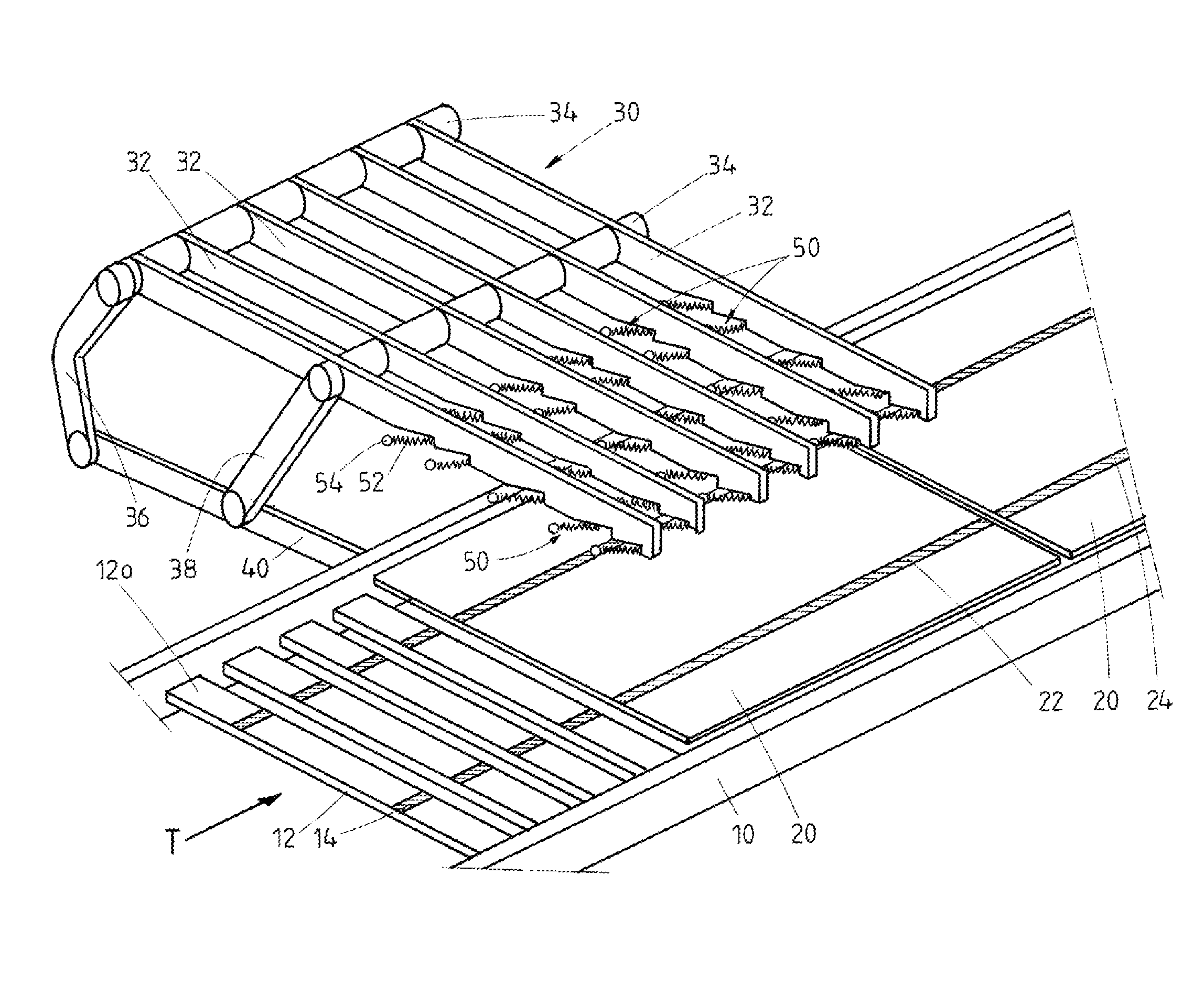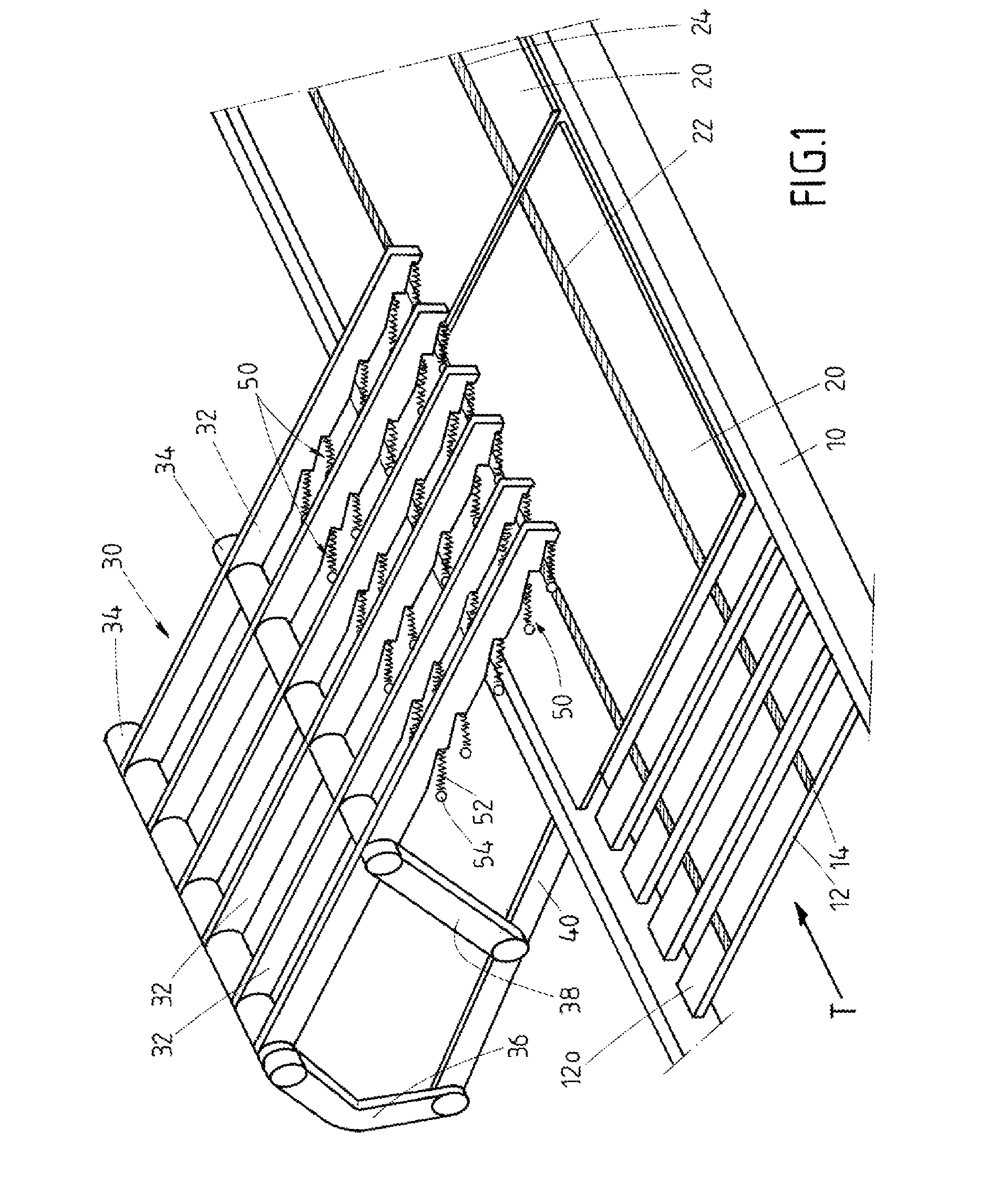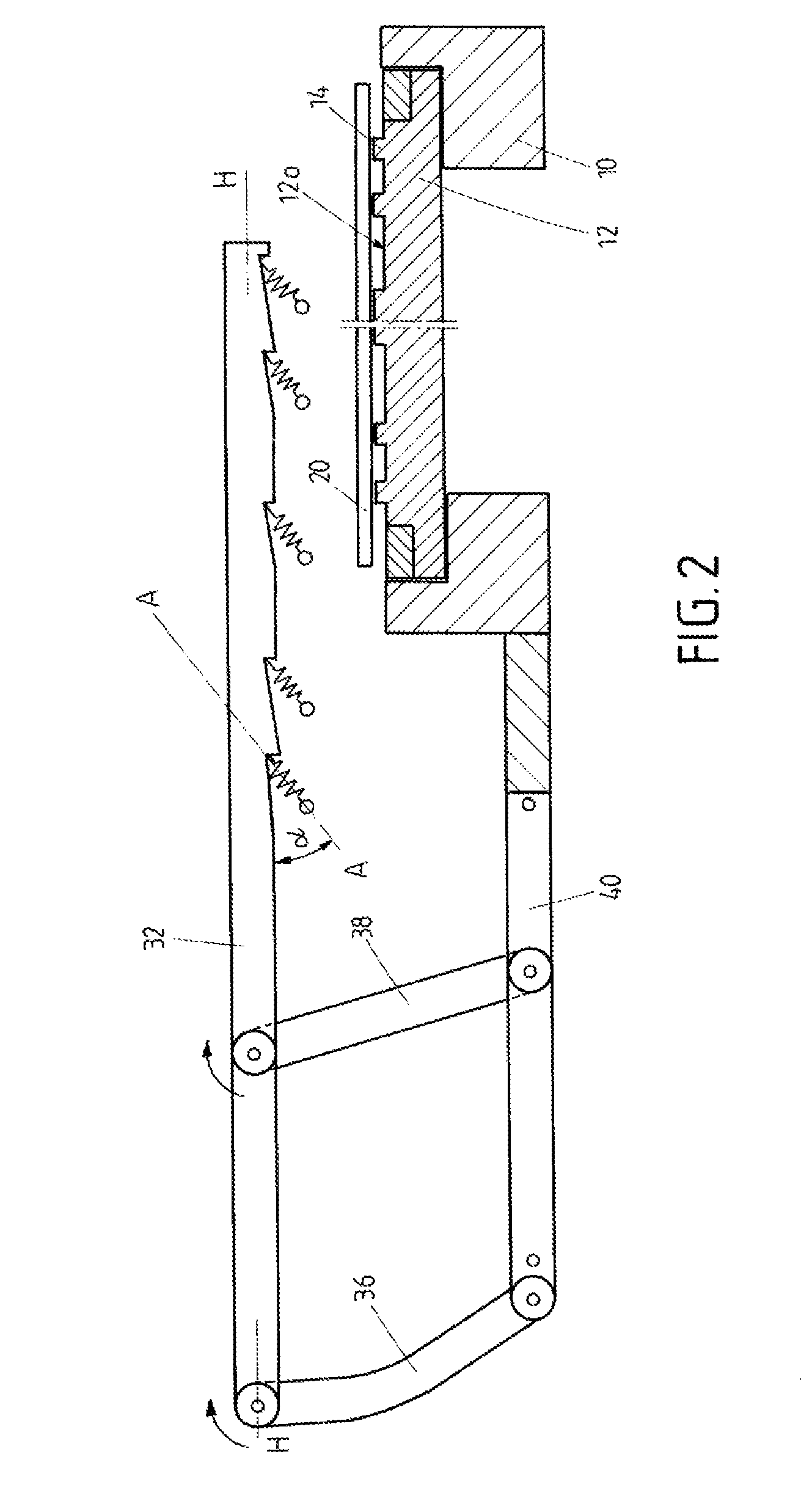Device for fixing conductor tracks on a solar cell
a solar cell and track technology, applied in the direction of gas flame welding apparatus, non-electric welding apparatus, auxiliary devices for welding, etc., can solve the problems of difficult to bring into the desired surface contact (fixation) with the upper surface, the construction of the hold-down device is complex, and the conductor track can easily be damaged, etc., to achieve optimized (steady) transport and high clock rate
- Summary
- Abstract
- Description
- Claims
- Application Information
AI Technical Summary
Benefits of technology
Problems solved by technology
Method used
Image
Examples
Embodiment Construction
[0044]The device includes a transport system the transport direction of which is characterized by arrow T. The transport system includes transport carriers 10 with tracks 12 that extend perpendicular to the transport direction T. Their upper surface 12o (in the operating position of the device) has bridge-like ridges 14 that extend in transport direction 10, in other words: perpendicular to longitudinal direction of the tracks 12. Several tracks are connected to a transport carrier 10.
[0045]On the tracks 12 solar cells 20 are arranged wherein several solar cells 20 are connected to a solar cell-string by corresponding conductor tracks 22, 24. One transport carrier 10 supports at least one complete string.
[0046]The transport carriers 10 are moved by driving-means not shown.
[0047]The device further comprises a crossbar 30 that has several arms 32 extending parallel at a distance to each other resting pivotably on two cross members 34 that are arranged at a distance to each other where...
PUM
| Property | Measurement | Unit |
|---|---|---|
| angle | aaaaa | aaaaa |
| angle | aaaaa | aaaaa |
| angle | aaaaa | aaaaa |
Abstract
Description
Claims
Application Information
 Login to View More
Login to View More - R&D
- Intellectual Property
- Life Sciences
- Materials
- Tech Scout
- Unparalleled Data Quality
- Higher Quality Content
- 60% Fewer Hallucinations
Browse by: Latest US Patents, China's latest patents, Technical Efficacy Thesaurus, Application Domain, Technology Topic, Popular Technical Reports.
© 2025 PatSnap. All rights reserved.Legal|Privacy policy|Modern Slavery Act Transparency Statement|Sitemap|About US| Contact US: help@patsnap.com



